After portrait photography, landscape photography is probably one of the most popular pastimes among photographers. Choosing the right lens for your landscape photography can significantly improve your shooting experience while also making a significant difference in the quality of your image. While there’s no single “right lens” for landscape photography, there are a few ways to choose the best one based on your shooting style and preference. Time to find out more about these lenses… let’s begin.
You won’t often see landscape photographers lugging around large telephoto lenses, although they might use one for very specific shots that they have in mind… Most often, you’ll see landscape photographers using a wide-angle prime, or a wide-angle zoom lens. You will see them lugging around tripods though, for long exposures in low-light situations … so the speed of the lens is a significant consideration.
Given this information, which lenses do landscape photographers most often use, and which lenses should you choose? As always, my answer is “It depends”. So, let’s look at what your landscape photography lens selection should depend upon.
There are a few things to consider when choosing a lens for landscape photography. Focal length, aperture, weather-sealing, weight, contrast & resolution, and price. Not all of these factors are important in equal weight, and there is space for individual preferences due to artistic choice. However, there are some basic properties that landscape photography lenses should meet. In this article, we’ll go in deep about landscape photography, and how to choose your lens based on what you like to shoot.
What is Landscape Photography?
This is rather straightforward… Photographing landscapes is what it’s all about, but there is enough variety in landscape photography that there aren’t just one or two lenses that will suit every landscape photographer’s needs. Nature is vast and varied. Capturing its wonder and glory is something that every photographer enjoys whether or not it is their source of income.
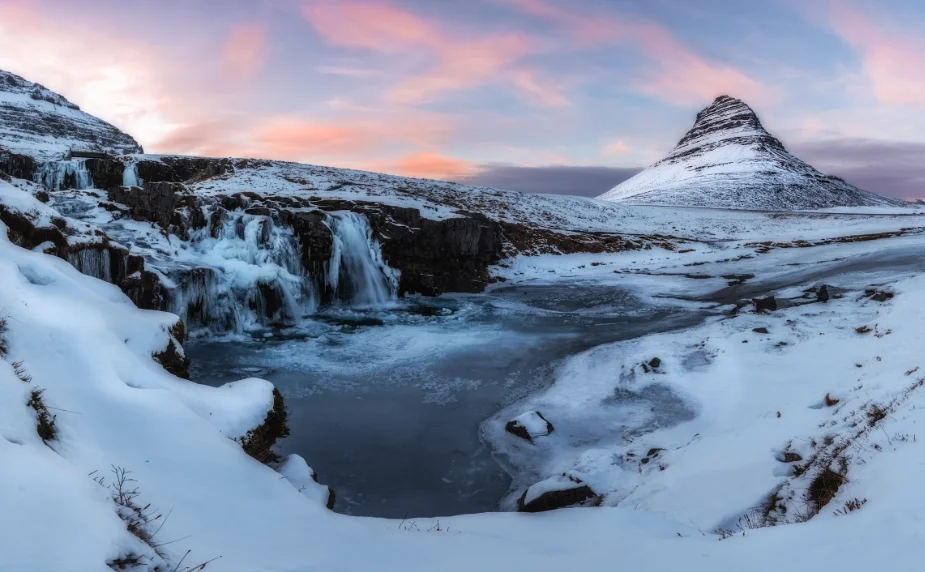
A well-photographed landscape can be a source of joy and inspiration to everyone, which is why you will find landscape images displayed in many buildings and residences around the world, and why some of the most famous painters of all time have painted beautiful landscapes.
What Does a Landscape Photographer Need from Their Lenses?
Landscape photographers look for Fast, Lightweight, and Weatherproof lenses that suit their style of photography, and that have the perfect focal length for their vision of the landscape in front of them. Each aspect of these lenses is important for the serious landscape photographer and with good reason.
Why Lightweight Lenses Are Important
If you’re choosing to use prime lenses, then it’s likely that you’ll have more than one lens in your camera bag. Often, a landscape photographer will choose several focal lengths, like 14mm, 17mm, 24mm, 35mm, 100mm, and sometimes longer lenses. The weight of these lenses can quickly add up.
The weight of your equipment may be of little consequence if you’re in a vehicle or taking photographs in a studio… However, equipment weight is very important when carrying lenses on treks into the wilderness, as you may have to carry other items like water, food, and camping gear along with your photography equipment. In instances like this, it makes sense to keep your equipment light, and minimal.
Why Fast Lenses are Important for Landscapes
Fast lenses are described as lenses that allow fast shutter speeds. In other words, they have a wide maximum aperture size (also called a small f-number) when compared to “slower” lenses of the same focal length. It’s usually more complex to make fast lenses, so they’re almost always more expensive, and larger.
Fast shutter speeds allow you to freeze movement, and to take photographs with less noise, and shorter shutter speeds in low-light scenarios. Each full f-stop that you gain on your lens, is one full ISO-stop lower.
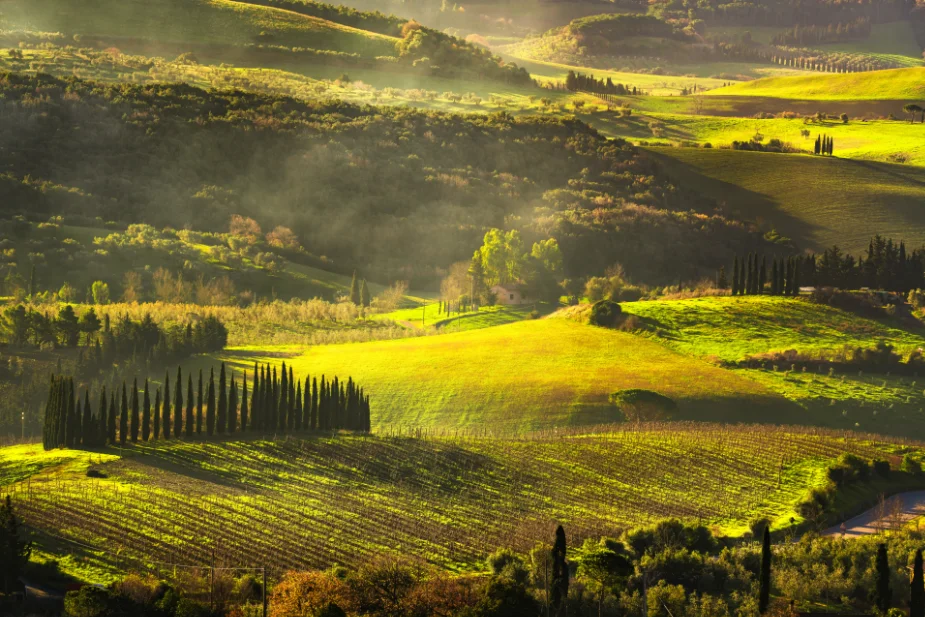
Another feature of fast lenses is that they have a shallower depth of field than smaller aperture lenses of the same focal length. This means that if you focus on something close to you with a wide-open aperture, then the background is likely to be slightly more out of focus. The separation between foreground and background is especially desirable in portrait photographs but not so much in landscapes.
In landscape photography, a shallow depth of field can sometimes be troublesome. Photographers will go to great pains to get everything in focus… They’ll take multiple photographs with different areas of the scene in focus, then combine these images digitally with software in a process called focus stacking, all so that they do not have any parts of the image out of focus.
Why Weatherproof Lenses are Important for Landscape Photography
When you’re out in the wilderness, the weather can change fast, and you may not be able to go “indoors” to get sufficient protection. A good carrying bag is always important to protect your equipment, but often, putting your gear away could mean that you miss once-in-a-lifetime images.
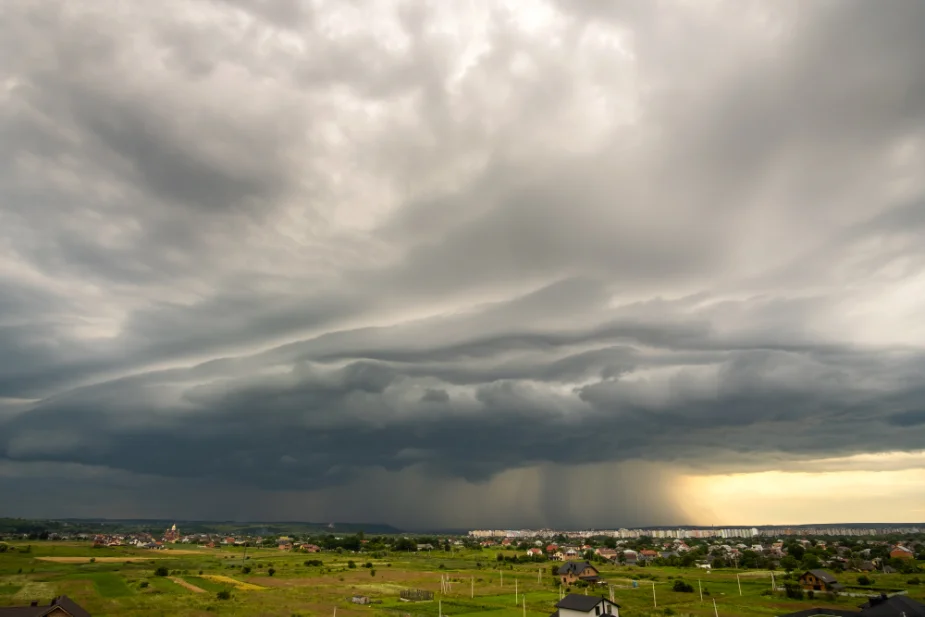
Weatherproofed lenses and cameras can continue functioning in conditions where there is dust or water. In these same conditions, non-weatherproofed equipment would have stopped working. These lenses have seals and gaskets in key places and have extremely well-made parts overall. This makes these pieces of equipment considerably more expensive than the cheaper non-weatherproofed lenses.
When you’re a professional and earn your income from photographing landscapes, you may not have the luxury of allowing a little inclement weather to stop you from getting the shot. Of course, there are other ways in which you can protect your equipment, but those are in addition to getting good gear.
Focal Lengths for Landscape Photography?
While you can use any lens for landscape photography. You’ll find that every landscape has details that can be picked up at wide, normal, telephoto, and super-telephoto focal lengths, to produce interesting photographs. However, you’ll find there are certain trends in which lenses are used most frequently. Let’s talk about these lens groups one by one.
Using Ultra-Wide Angle Lenses for Landscapes
Ultra-wide-angle lenses (usually around 11-20mm) are popular among photographers for the extreme perspective distortions that they can create. This can be seen either as a feature, or as a distraction. Ultra wide-angle lenses offer a unique perspective in landscape photography. They offer a wider field of view and greater depth of field than standard wide-angle lenses. This allows for much more of the scene to be captured in a single shot. This is perfect if you have a scenery with many layers of depth, and interesting features in near, mid, and far fields.
You should be careful how you use these lenses because far objects appear very small, and near objects very large. This can cause even not-so-distant objects to disappear in your composition, while nearby objects dominate it. In my experience, ultrawide lenses can be a novelty to be used in certain situations, and even used quite regularly, but if the distortion effect is overused, the viewer can get tired of it.
Using an ultrawide zoom lens such as a 12-24mm lens gives you the option to choose your focal length, and how much of the distortion effect you want in your photograph.
Using Wide Angle Lenses for Landscapes
Standard wide-Angle lenses are usually the staple of the landscape photographer. Lenses with a focal length between 20-40mm, such as the 16-35mm lens, or prime lenses in this focal length range allow you to capture the expanse of the scenery in front of you, while also allowing some of the foreground to stay in the frame. They are sufficiently wide to allow you to capture the vastness of the scene, while retaining some of the details that may be lost with wider-angle lenses.
One thing to remember is that wide-angle lenses have a larger depth of field than telephoto lenses. Wide-open apertures tend to bring more area of the scene into sharp focus compared to longer focal length lenses. Another way to get more depth of field at wider apertures is to use the Hyperfocal Distance technique. Focusing at the hyperfocal point can greatly increase the area of the scene that is in sharp focus.

Using Normal, Telephoto, and Super-Telephoto Lenses for Landscapes
Normal lenses are not always ideal for landscape photography, but they’re often used because they capture a scene the way the human eye would see it. They provide a perspective, that looks natural to our eyes, with relatively little distortion and a large depth of field (when compared to telephoto lenses).
They’re useful to capture a part of a scenery where you want to keep relative sizes and perspectives similar to what you see with your eyes. They’re reasonably fast, light, and are among the most common and versatile lenses that a photographer can own. Yet, they’re not usually the first choice for a landscape photographer.
Telephoto and Super-Telephoto lenses also have their uses when photographing a scene. Capturing the grandeur of a distant mountain, photographing a distant feature… a lone tree, the curve of a river, or some interesting rock feature… these are all things that you will want to capture. But wide-angle lenses just can’t do it because of the wide field of view. You’d have to get really really close, to get the frame that you have in mind – and maybe there’s a huge gorge separating you from it. This is why landscape photographers carry a telephoto lens, and sometimes maybe even a super-telephoto lens. Your mileage may vary depending on your style of photography, as well as the location that you’re visiting.
How to Choose Which Lens to Use, With So Much Choice?
As with most artistic endeavors, you’ll develop your own vision as you practice more, and figure out what you like, and dislike about your photographs. Don’t be afraid to change your mind. Digital photography is incredibly cheap, and fast-paced when compared to film photography, so you can easily afford to experiment while on location.
If you can, borrow or rent a lens so that you can get to use it in a way that you’re likely to, most often… Doing this before you buy is a good way to get familiar with the lens and find out what it can and cannot do, without putting down all that money.
Should I Use a Zoom Lens for Landscape Photography?
While many photographers swear by using prime lenses for landscapes, because of the quality, and the speed (large aperture sizes) that they can offer, prime lenses are not for everyone.
Who are Zoom Lenses For?
Prime lenses can be hard to use when it comes to ease of composition, and for this reason, I usually don’t recommend using too many prime lenses for beginners. Using a zoom allows beginners to experiment, and to understand what they like or dislike about a focal length.
On the other hand, zoom lenses allow greater flexibility in composition, but at the price of having smaller apertures (transmitting less light), and maybe having lower quality and (comparatively) more weight.
In terms of quality, the gap between zoom lenses and primes has narrowed over the years. At the very highest end, there are incredibly good lenses that produce images that are often indistinguishable from those that prime lenses produce.
Our Recommendation:
Zoom lenses are what I would suggest for the casual landscape photographer who wants to take photos while on a trek, while camping, or just once in a while. They’re more forgiving, especially when you can’t, or don’t want to trek to the ideal spot to get a photograph that you have in mind.
Should I Use a Prime Lens for Landscape Photography?
The reasons why Landscape Photographers often favor Prime lenses are varied. Often, it is simply because the photographer loves the lens, and because it has a certain “je ne sais quoi” quality about it. These are valid reasons to choose a prime lens, but there’s more to the argument. Once you have used a prime for a while, you begin to know exactly what to expect from it, and this kind of reliability is often just as important as mechanical reliability.
Many prime lenses have the advantages we discussed earlier: they are smaller, lighter, and faster. It’s one of the most significant advantages of prime lenses, making them more portable. They also have larger apertures than zoom lenses as a general rule, giving you more control over depth of field and making them more suitable for low-light photography (at the expense of depth of field, of course).
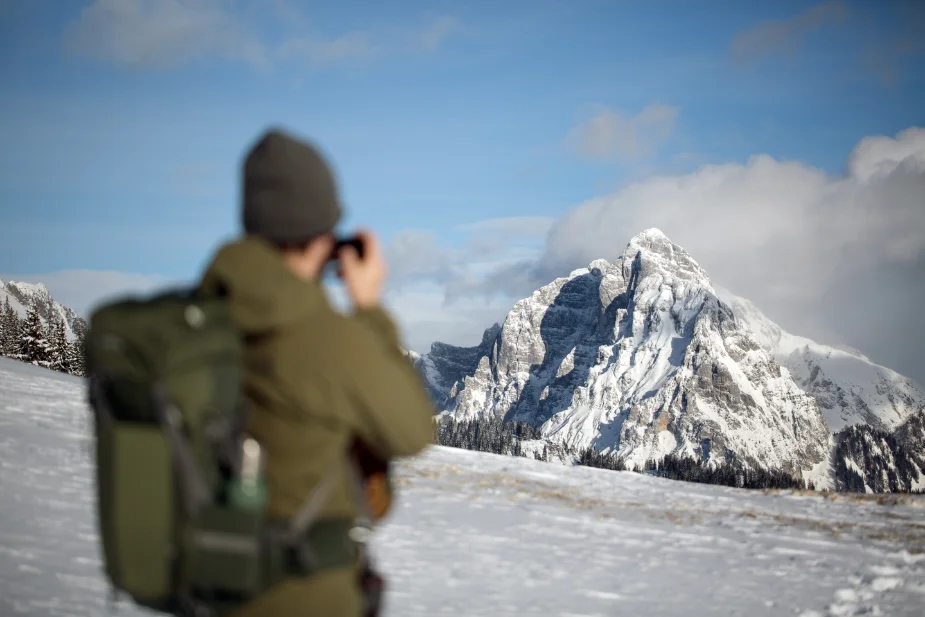
Prime lenses are optimized for one particular focal length, and can perform better as a result. The result: sharper images with fewer aberrations and lower distortion. But most software today has lens profiles for each lens and camera combination, further reducing lens aberrations and distortions in post-production.
Our Recommendation:
If you’re an experienced landscape photographer with a style that you understand, then you probably already know which lens you want to use for a particular photograph. Using prime lenses at focal lengths that you know you like, could lighten your camera bag, but carrying many can quickly add to your load … and to your checkbook. If you know what you like, and your clients require impeccable image quality, then prime lenses are for you.
Prime lenses are nice to use, but can be less forgiving to photographers with less experience in landscape photography, or if you don’t know what you are going to find on your photography trip. At the same time, you can start with a prime lens that you’ve wanted to try, and see what you enjoy. Expand your lens list as required.
The Best Lenses to Capture Sharp Images in Low Light
Low light performance is another consideration for a landscape lens. Landscape photographers often shoot in the early morning or evening light when the light is softer. A lens that can perform well in low light will produce sharper images with less noise. Fast prime lenses are ideal for low light. These lenses can be expensive, but they’re worth the investment if they are needed for your shooting style.
Another thing to consider when choosing a lens for low-light landscape photography is the focal length. A wide-angle lens is typically best for landscape photography, as it allows you to capture a wider field of view – to capture images of vast vistas, such as mountains, or snug locations like the heavily wooded parts of a forest. This will translate into less shake and blur in handheld photos.
Of course, you can use a tripod with any focal length lens that you want. You’ll need a steady hand, or a steady mount to be able to capture sharp photographs with long exposure times.
Tips for Choosing the Right Lens for Your Landscape Photography
You already know what landscape photographers look for in their lenses. You know what kinds of lenses are available to choose from, and what they’re used for most often. Now all that remains is for you to decide on your budget and whether you want to choose a lens made by the same company as your camera, or whether you want to choose a 3rd party lens manufacturer like Sigma or Tamron.
1. Picking Your Budget
The first thing that you should know about choosing a lens is that you should never put yourself out of pocket for equipment. Never get into debt for a lens, because there are always alternatives. You can borrow, rent, or even buy second-hand or open-box lenses. There are also lenses available at a wide range of price points as long as you’re willing to embrace some of the restrictions that these lenses have.
For example: Sony sells multiple 50mm lenses, as well as one 40mm lens and one 55mm lens. They range from $250 to $1,999. And if you’re shooting mostly at f/5.6 and you have a budget to consider, buying massive, heavy, and expensive $2,000 f/1.2 GM lens isn’t going to benefit you as much as you would expect. You can buy the cheaper 50mm f/1.8 and still have a really fast lens (most zoom lenses don’t stop down to f/2.8 unless you pay a LOT of money – f/3.5 is typically a large aperture for zoom lenses) that is light, in weight and on your pocket.
At the same time, it goes without saying that you pay more for better quality. The question is always: do you need that extra 10% of sharpness, contrast, or resolution? For most amateurs, the answer would be: not really. You can make do without… Professionals may put down the extra expense as a business expense, and the cost of delivering a high-quality image to the client. As a result, they would build the cost of their equipment into the shoot fees over time.
2. Picking Your Manufacturer
It’s likely that your lenses will outlast your camera. So, I think it’s important to be happy with it. When choosing your lens, you have the option to pick lenses made by 3rd party lens manufacturers – companies other than the maker of your camera body. For Example, companies like Sigma, Zeiss, and Tamron make excellent lenses that work on the lens mounts of various camera manufacturers like Sony, Nikon, and Canon. However, you must choose which mount you want to use the lens with at the time of purchase because you can’t change mounts afterward.
What to Look Out For When Choosing a Wide-Angle Lens
There are a few nice-to-have features as well as must-have features that you should look out for when you buy your lens. Here is a quick run-through of them:
- In-built Lens Hood: Wide-angle lenses have a very wide field of view, and as a result, it can be difficult to avoid light sources from being within your photograph. Having a light source directly in your frame will often result in lens flare, which can result in localized soft contrast and can be extremely distracting. Before buying your lens, you should look at a gallery of sample images, and check for flare from point light sources, and whether softness from flare of an overcast sky is an issue. You can buy lens hoods for wide-angle lenses that will reduce the effect of light sources that are just out of your frame, but watch out for non-matching lens hoods, as they can infringe on the lens’ field of view and cause vignetting. Ultra-wide angle lenses have a field of view that’s so wide that most lens hoods don’t work, so they often have built-in petal lens hoods that are part of the lens body itself. This is a must-have feature.
- Filters: If you like to use filters, then you need to take extra care when using them with wide and ultra-wide-angle lenses. Since the field of view is so large, even the metal edge of the filter can become part of the photo. Instead, these lenses have slots for gel filters behind the rear lens element. You can take the lens off the camera, and slot in gel filters. However, adjusting them is nearly impossible, so instead large, external filter holders are used for more control and finesse. The gel filter holder is a nice-to-have feature, but you can do without it.
- A Well-fitting Lens Cap: Wide and ultra-wide lenses often have large, heavy front lens elements. In some lenses, they protrude beyond the lens body, making it easy to scratch them or have them damaged. This makes designing a robust lens cap difficult, and often you’ll find that the cap gets bumped off the lens when in your camera bag. A well-designed, lens cap that stays on when you need it to, and comes off only when you need it to, is vital. This is a must-have feature.
How to Get the Most Out of Your Telephoto Lens for Landscape Photography
Telephoto lenses are ideal for landscape photography… sometimes… They allow you to capture close-up shots of individual elements within the landscape, so you’ll want to couple it with a wide-angle lens.
When using a telephoto lens, it’s important to keep a few things in mind. First, use a tripod or monopod to stabilize the camera and lens for lenses over 150mm. This will prevent camera shake and ensure sharp images.
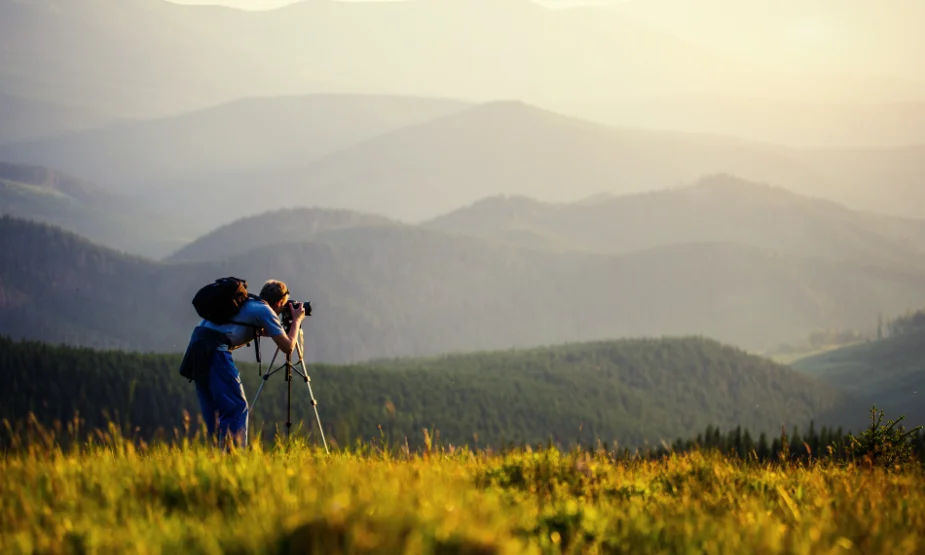
In addition to the tips above, here are a few more things to keep in mind when using a telephoto lens for landscape photography:
- Choose the right focal length. A telephoto lens with a focal length of 70-200mm is a good choice for most landscape photography, as it allows you to zoom in on specific elements, and gives you a wide focal length range to choose from.
- It’s unlikely that you’ll need a lens that’s longer than 200mm. You can carry a teleconverter to extend its focal length, with very little addition of weight, but at the cost of a few f-stops of light.
- Choose a wide aperture. A wide aperture (e.g. f/2.8 or wider) will help to blur the background and make your subject stand out even more than a telephoto would normally.
By following these tips, you’ll be able to get the most out of your telephoto lens and capture stunning landscape photos.
What Lenses Are Best for Beginner Landscape Photographers?
If you’re a beginner, then I would suggest that you don’t buy the most expensive lenses just yet. Buy good ones that you can easily afford. Affordability is important at this stage, because you don’t yet know what you want, and need. Once your style and eye for landscape photography have developed a little more, you will automatically understand what equipment you prefer to use to get the images that you want to create. You will not need a guide like this, but will directly look at lens reviews for the specific lenses that you are interested in.
Wide Angle & Ultra Wide Angle Lenses (Zoom & Prime Lenses)
| Canon | Sony | Nikon |
|---|---|---|
| Canon RF 14-35mm f/4L IS USM | Sony FE PZ 16-35mm f/4 G | Nikon Nikkor Z 14-24mm f/2.8 S |
| Canon RF 15-35mm f/2.8L IS USM | Sony FE 12-24mm f/2.8 GM | Nikkor Z 17-28mm f/2.8 |
| Canon RF 15-30mm f/4.5-6.3 IS STM | Sony FE 12-24mm f/4 G | Nikon Nikkor Z 14-30mm f/4 S |
| Sony FE 16-35mm f/2.8 GM | Nikon Nikkor Z 24-50mm f/4-6.3 | |
| Canon RF 16mm f/2.8 STM | Sony FE 14mm f/1.8 GM | |
| Sony FE 20mm f/1.8 G | Nikon Nikkor Z 20mm F1.8 S | |
| Canon RF 24mm F1.8 Macro IS STM | Sony FE 24mm f/2.8 G | |
| Canon RF 35mm f/1.8 IS STM Macro | Sony FE 35mm f/1.4 GM | Nikon Nikkor Z 28mm f/2.8 |
| Sony Vario-Tessar T* FE 16-35mm f/4 ZA OSS |
Standard Zoom & Normal Primes
| Canon | Sony | Nikon |
|---|---|---|
| Canon RF 24-70mm f/2.8L IS USM | Sony FE 24-70mm f/2.8 GM II | Nikon Nikkor Z 24-70mm f/2.8 S |
| Sony Vario-Sonnar T* 24-70mm f/2.8 ZA SSM II | Nikon Nikkor Z 24-70mm f/4 S | |
| Canon RF 24-105mm f/4.0-7.1 IS STM | Sony FE 24-105mm f/4 G OSS | Nikon Nikkor Z 24-120mm f/4 S |
| Sony FE 28-60mm f/4-5.6 | Nikon Nikkor Z 24-50mm f/4-6.3 | |
| Canon RF 50mm f/1.2L USM | Sony FE 50mm f/1.2 GM | Nikon Nikkor Z 50mm f/1.2 S |
| Sony FE 50mm f/2.5 G | Nikon Nikkor Z MC 50mm f/2.8 | |
| Canon RF 50mm f/1.8 STM | Sony FE 50mm f/1.8 | Nikon Nikkor Z 50mm f/1.8 S |
| Sony Planar T* FE 50mm f/1.4 ZA | ||
| Canon RF 24-240mm f/4-6.3 IS USM | Sony FE 24-240mm f/3.5-6.3 OSS | Nikon Nikkor Z 24-200mm f/4-6.3 VR |
Telephoto Zoom Lenses
| Canon | Sony | Nikon |
|---|---|---|
| Canon RF 70-200 f/4L IS USM | Sony 70-300mm f/4.5-5.6 G SSM II | |
| Canon RF 70-200mm f/2.8L IS USM | Sony FE 70-200mm f/2.8 GM OSS II | Nikon Nikkor Z 70-200mm f/2.8 VR S |
| Canon RF 100-500mm f/4.5-7.1L IS USM | Sony FE 200-600mm f/5.6-6.3 G OSS | |
| Canon RF 100-400mm f/5.6-8 IS USM | Sony FE 100-400mm f/4.5-5.6 GM OSS | Nikon Nikkor Z 100-400mm f/4.5-5.6 VR S |
That’s a lot of lenses, and understandably so. There are many ways to achieve what you want in landscape photography with these lenses, so take your pick and enjoy the process. We have a few more articles discussing how to pick a up lens for any particular type of photography.
Check out the lens buyers guide, for more articles like this, and let us know what you find useful.
Help Us To Continue Creating
Get our email newsletter to stay up-to-date with our latest posts. It’s easy to read and is mailed once in 2 weeks.
The easiest way to support Beyond Photo Tips is by using our affiliate links when you buy anything at all. It will never cost you anything extra, and we get a small commission from it, which helps us a LOT! We share our recommended equipment list here.
Some of the links to products on this website are affiliate links, and we only ever link out to gear that we recommend.
You could also show your appreciation by buying us a coffee. Finally, we appreciate you being a part of the community, so do say hi!

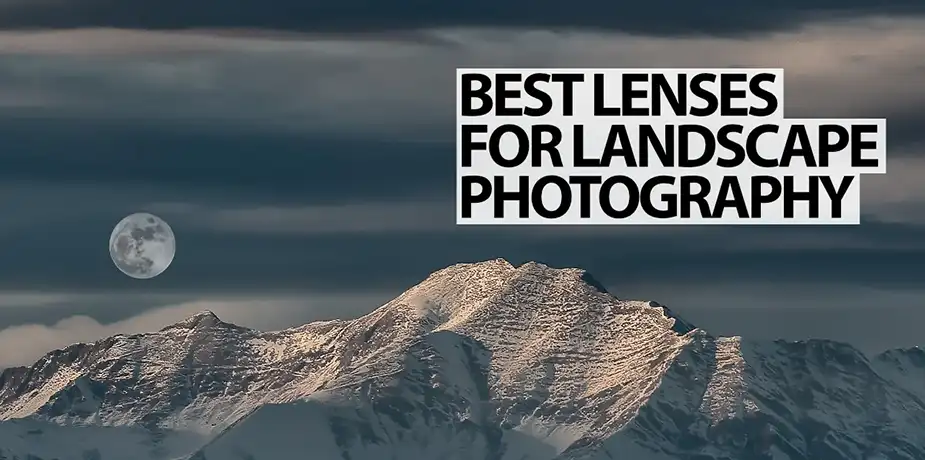
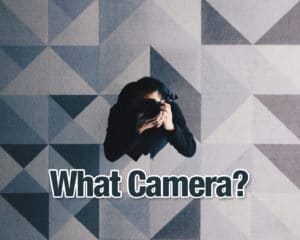
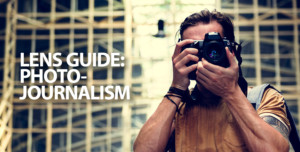

Wow! You have just bout covered everything! 🙂